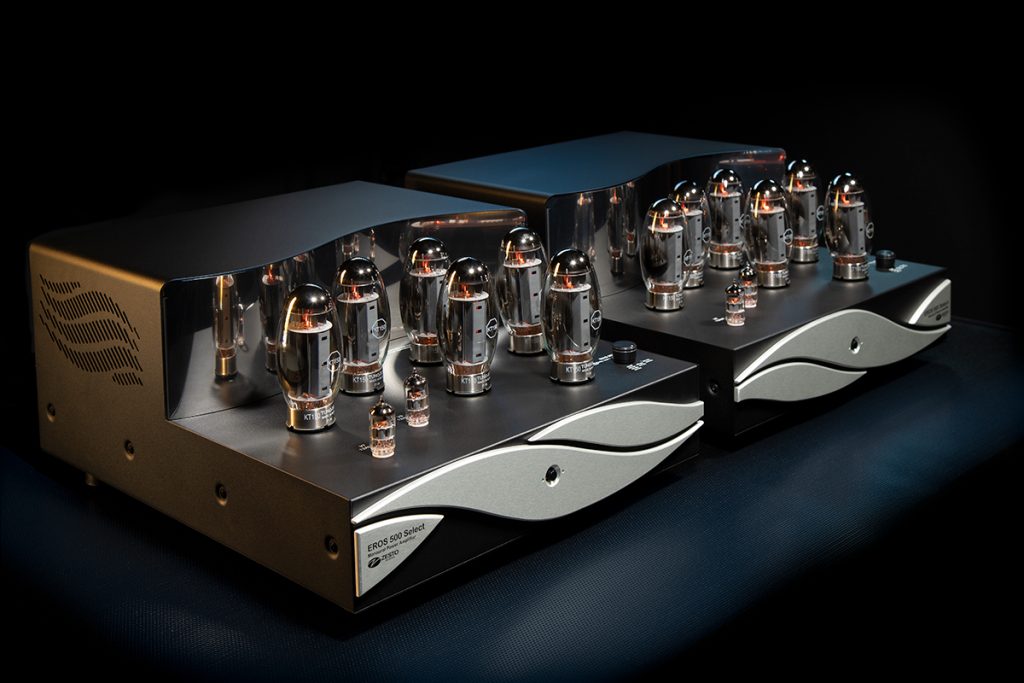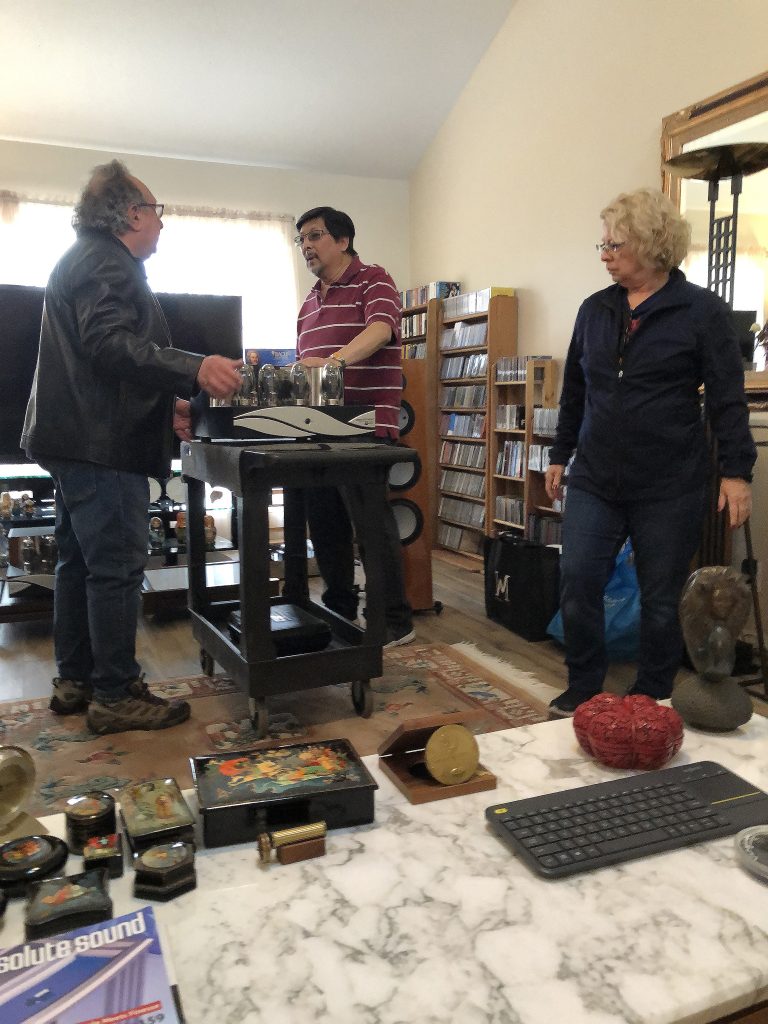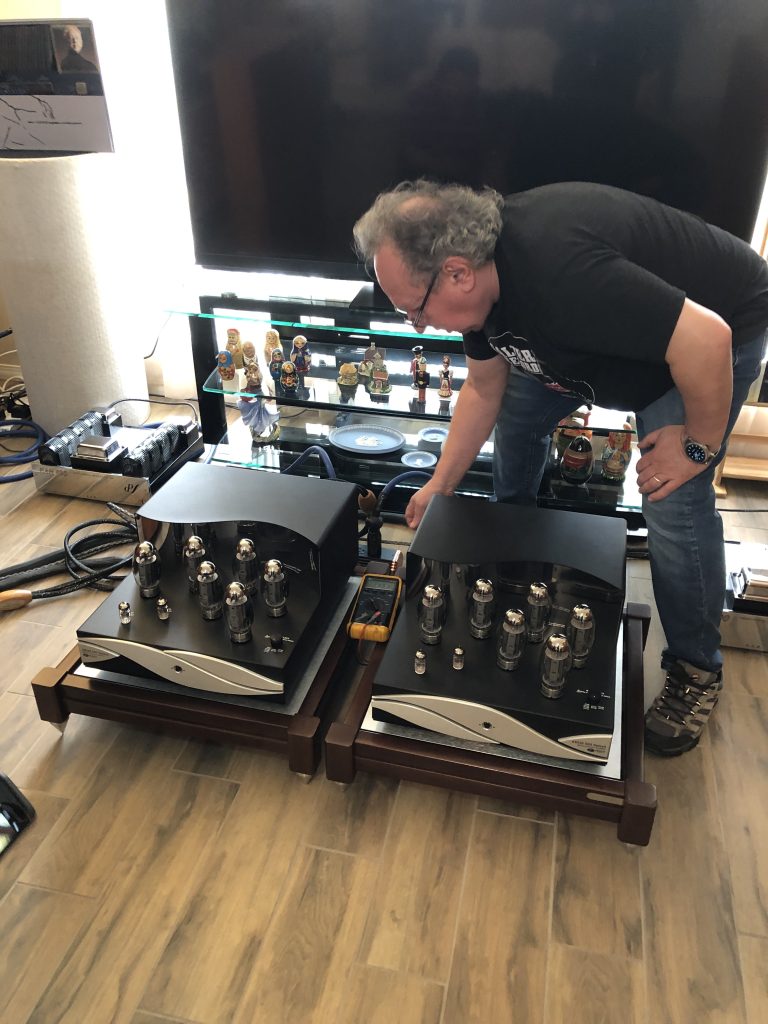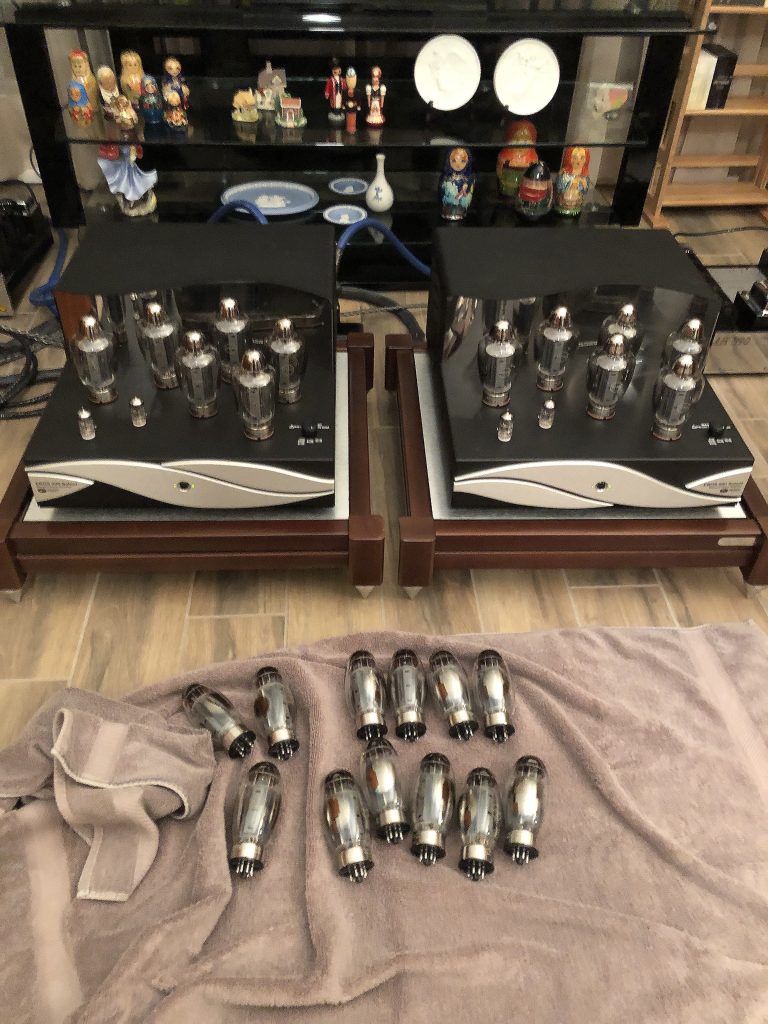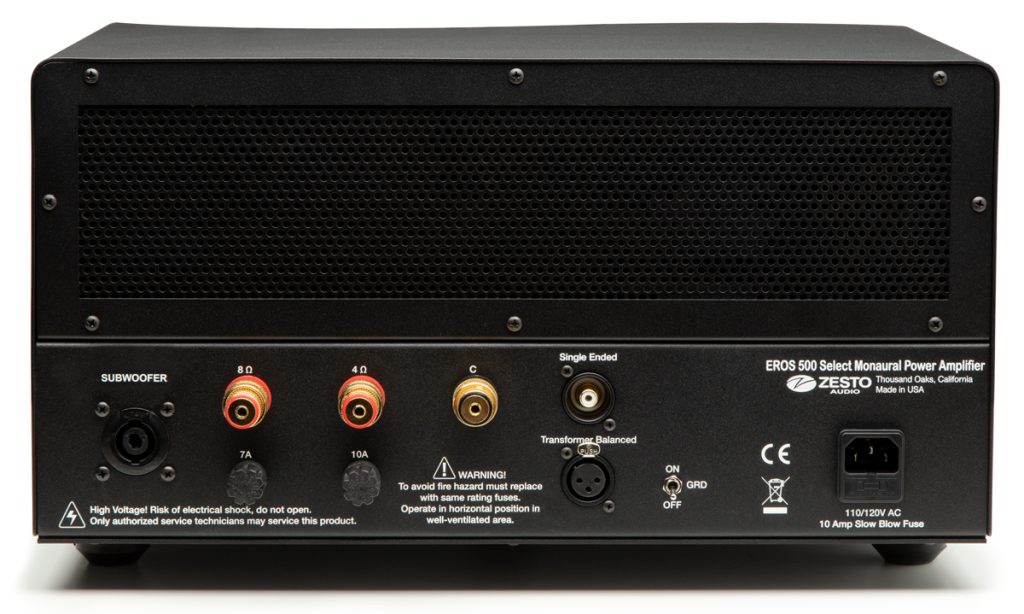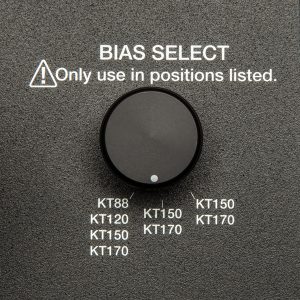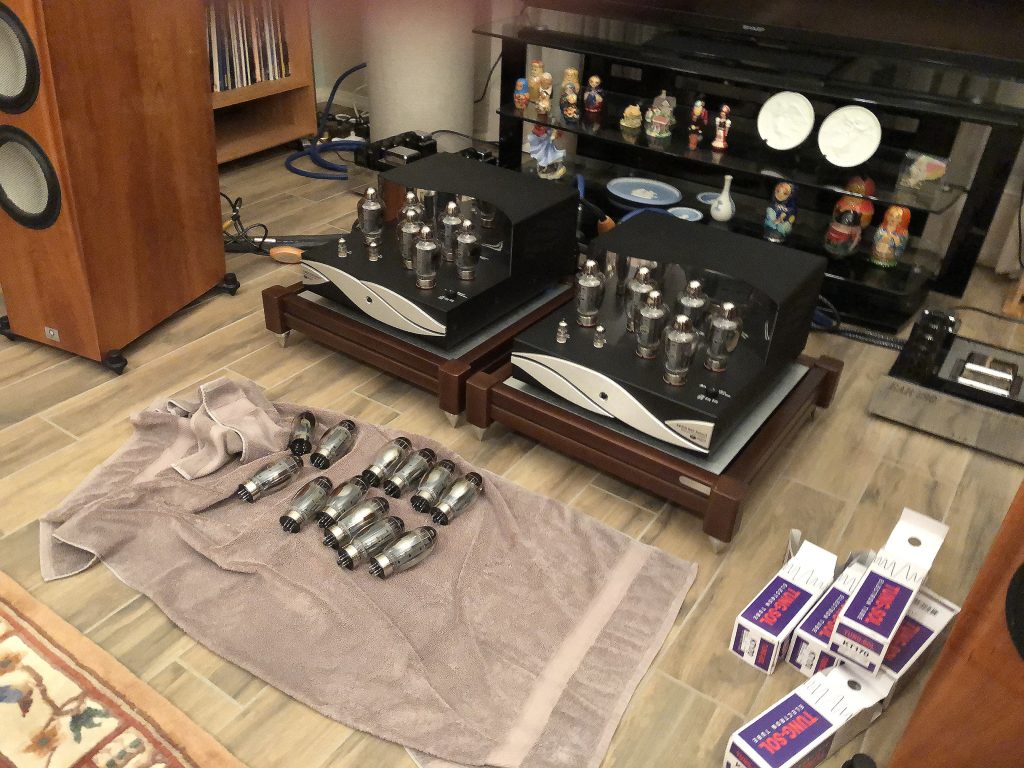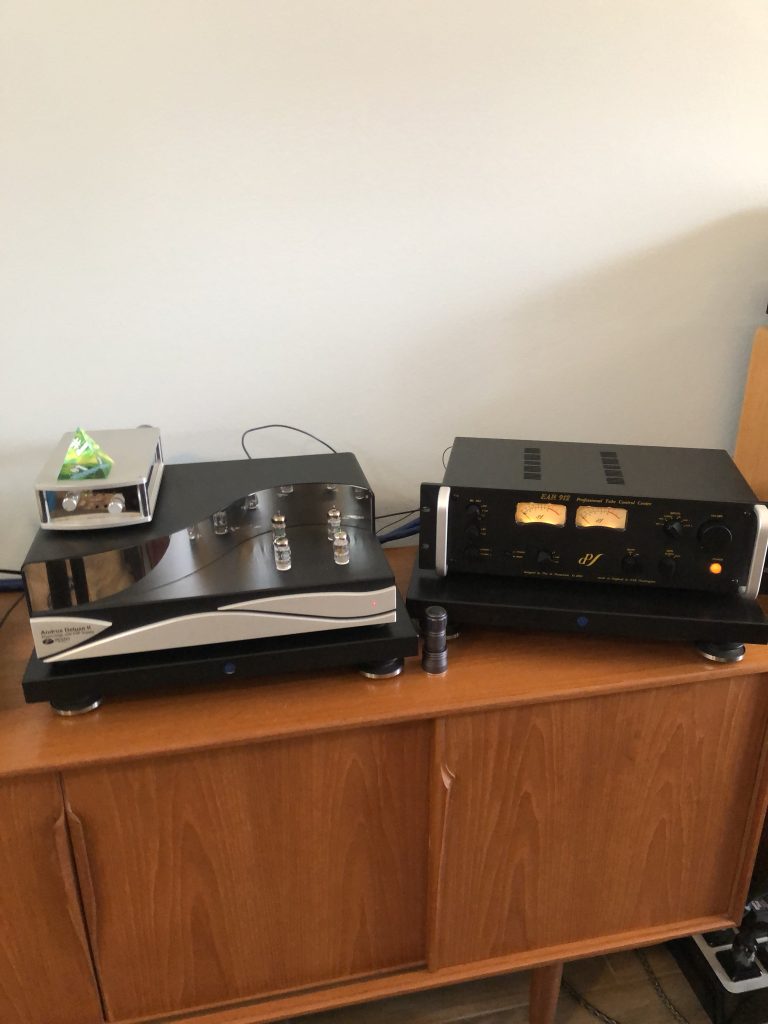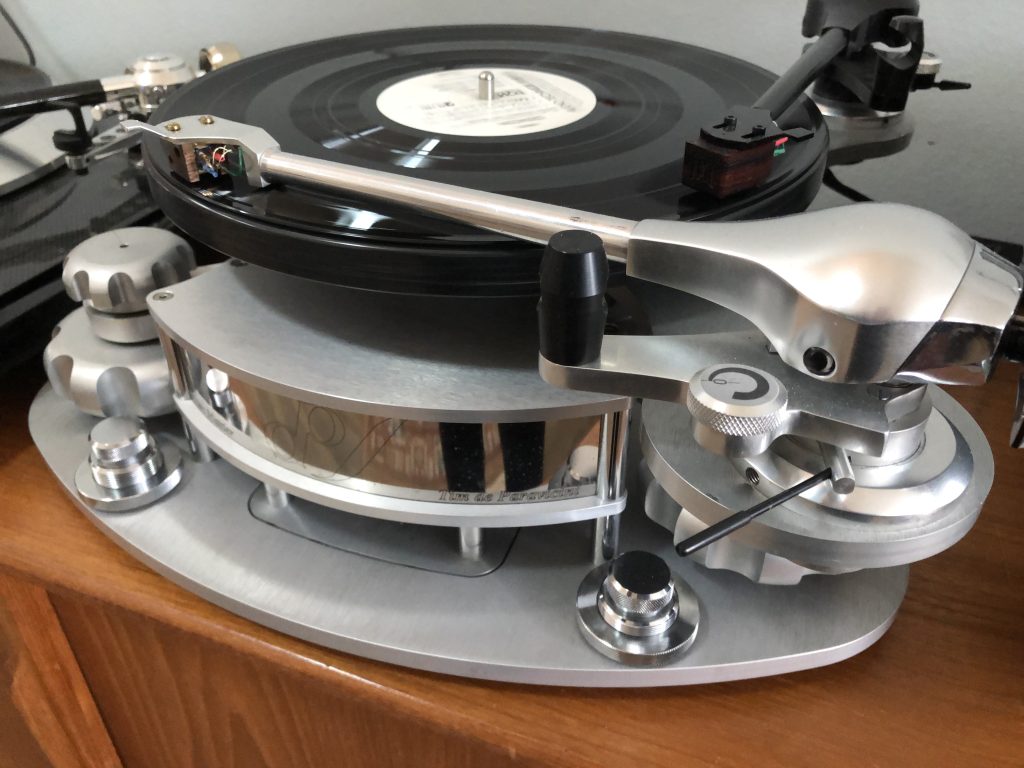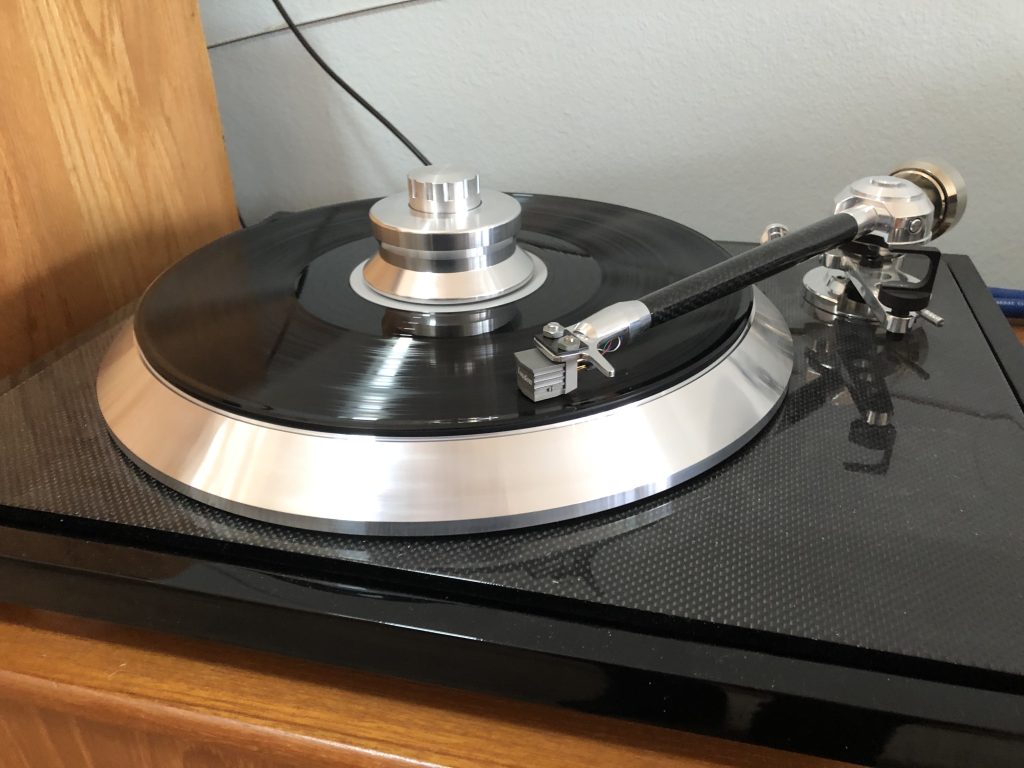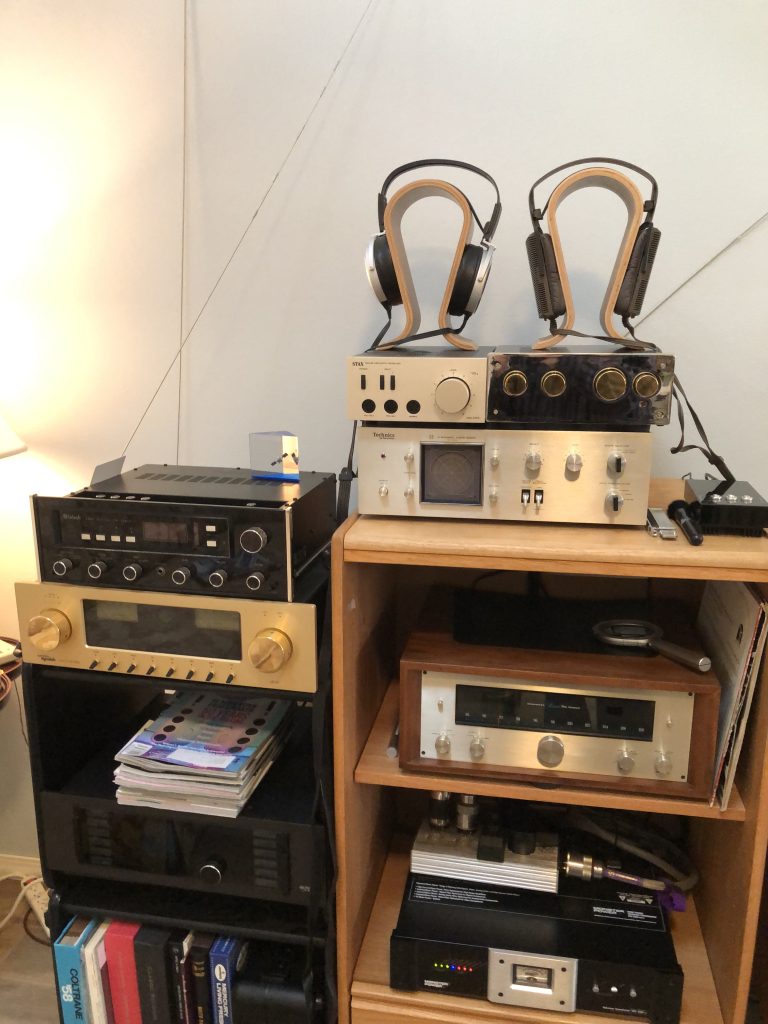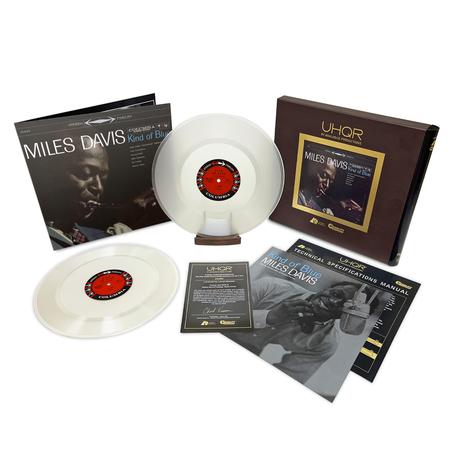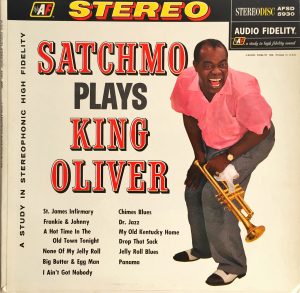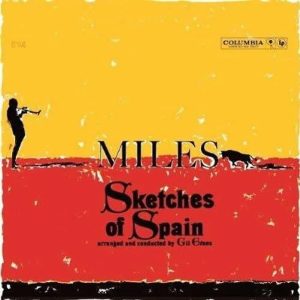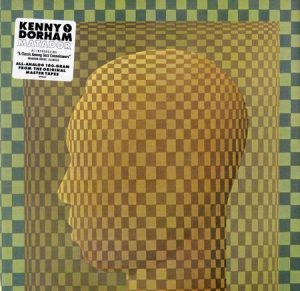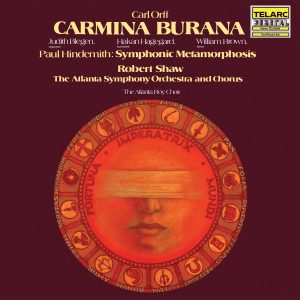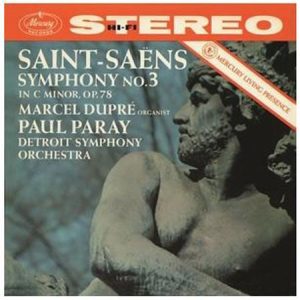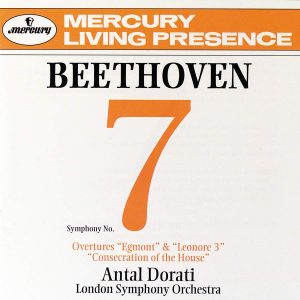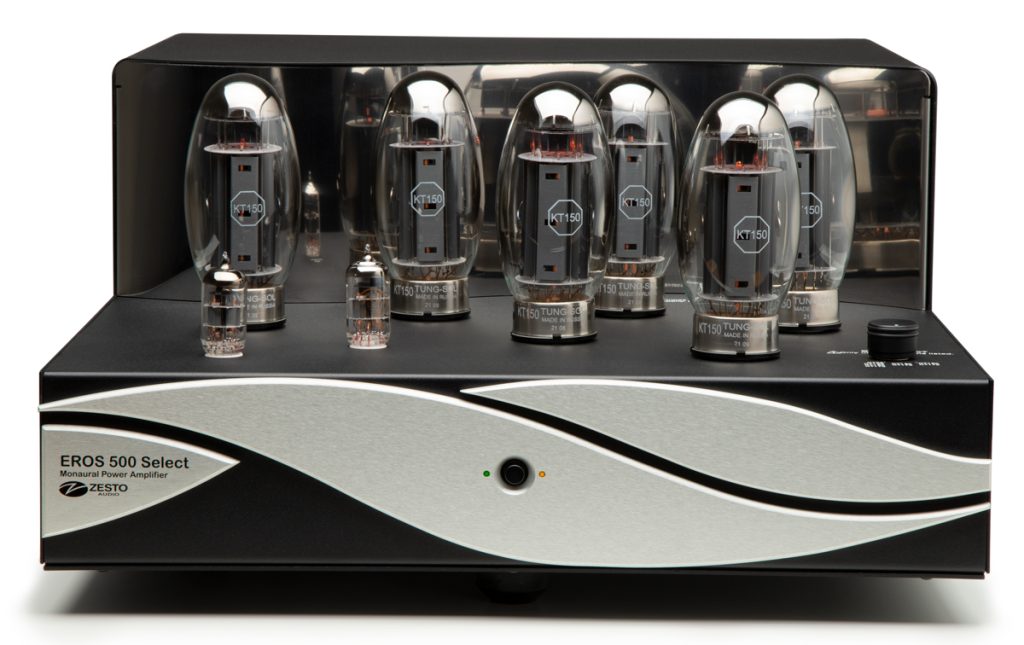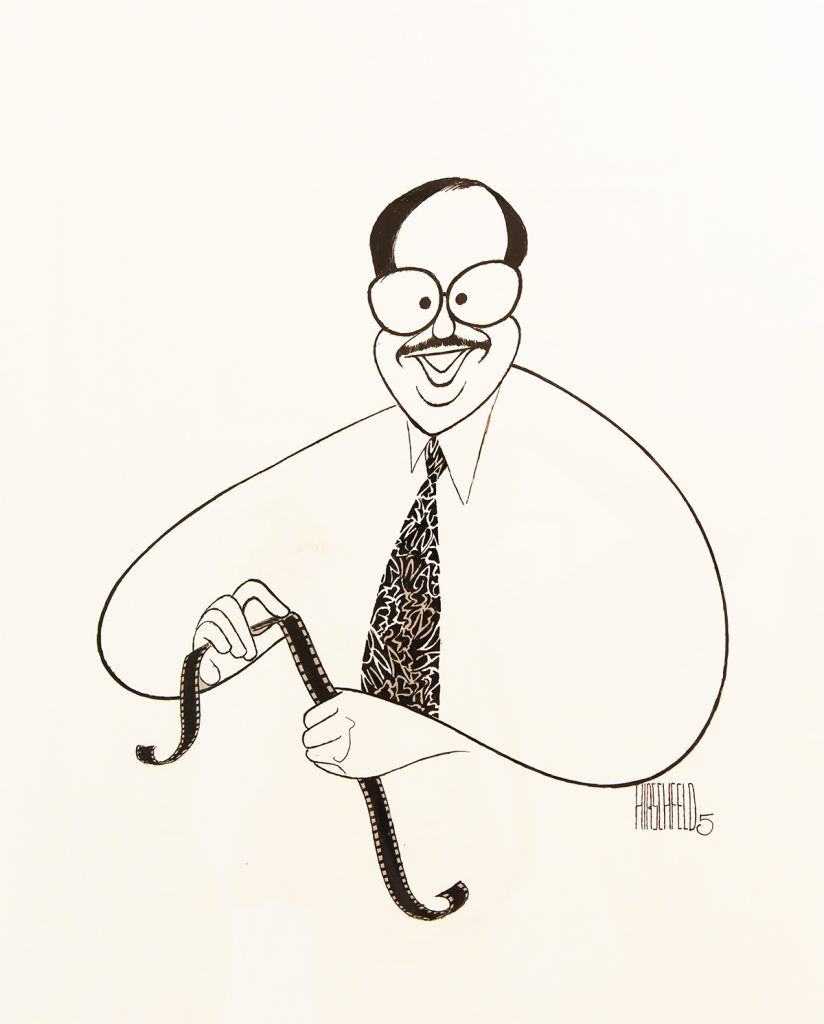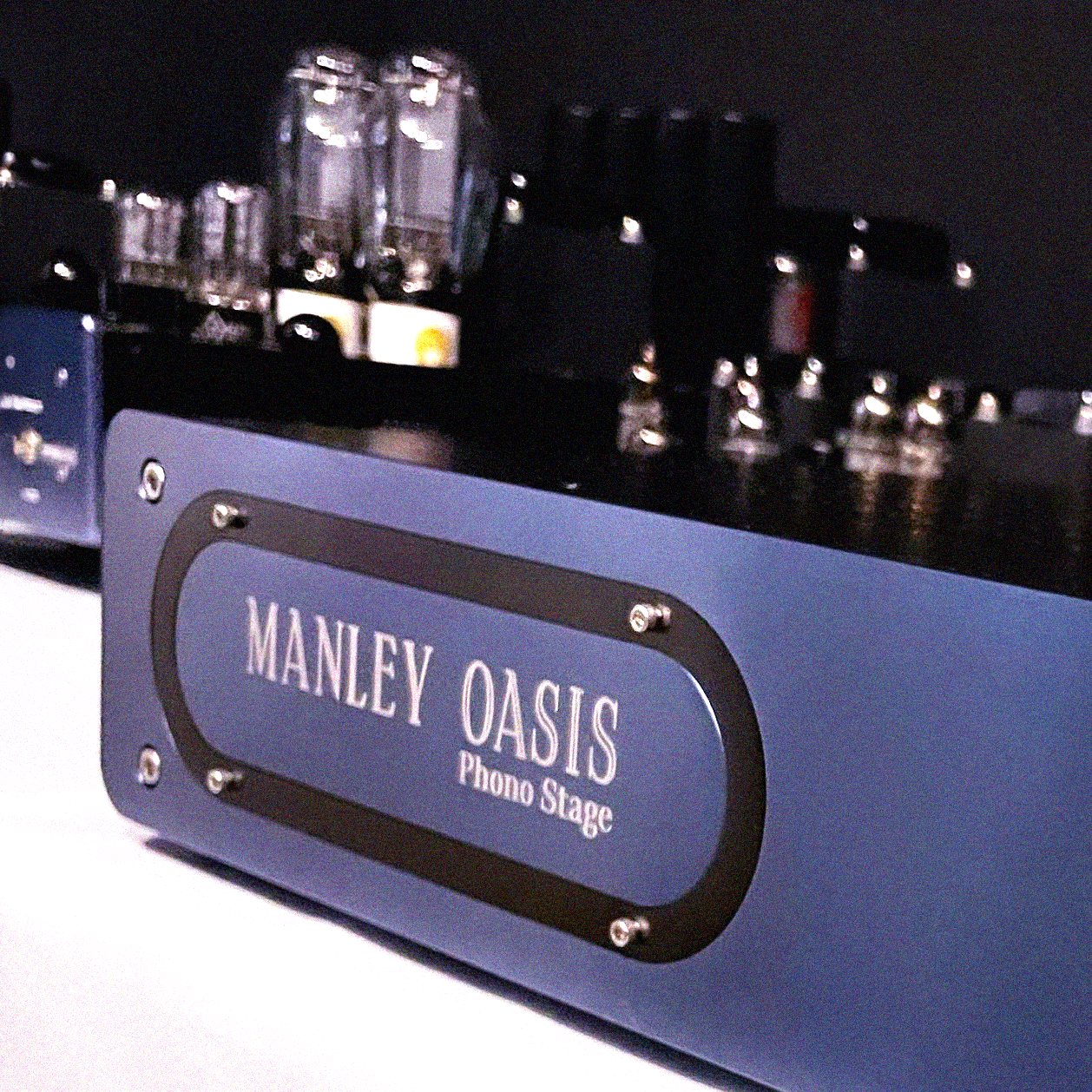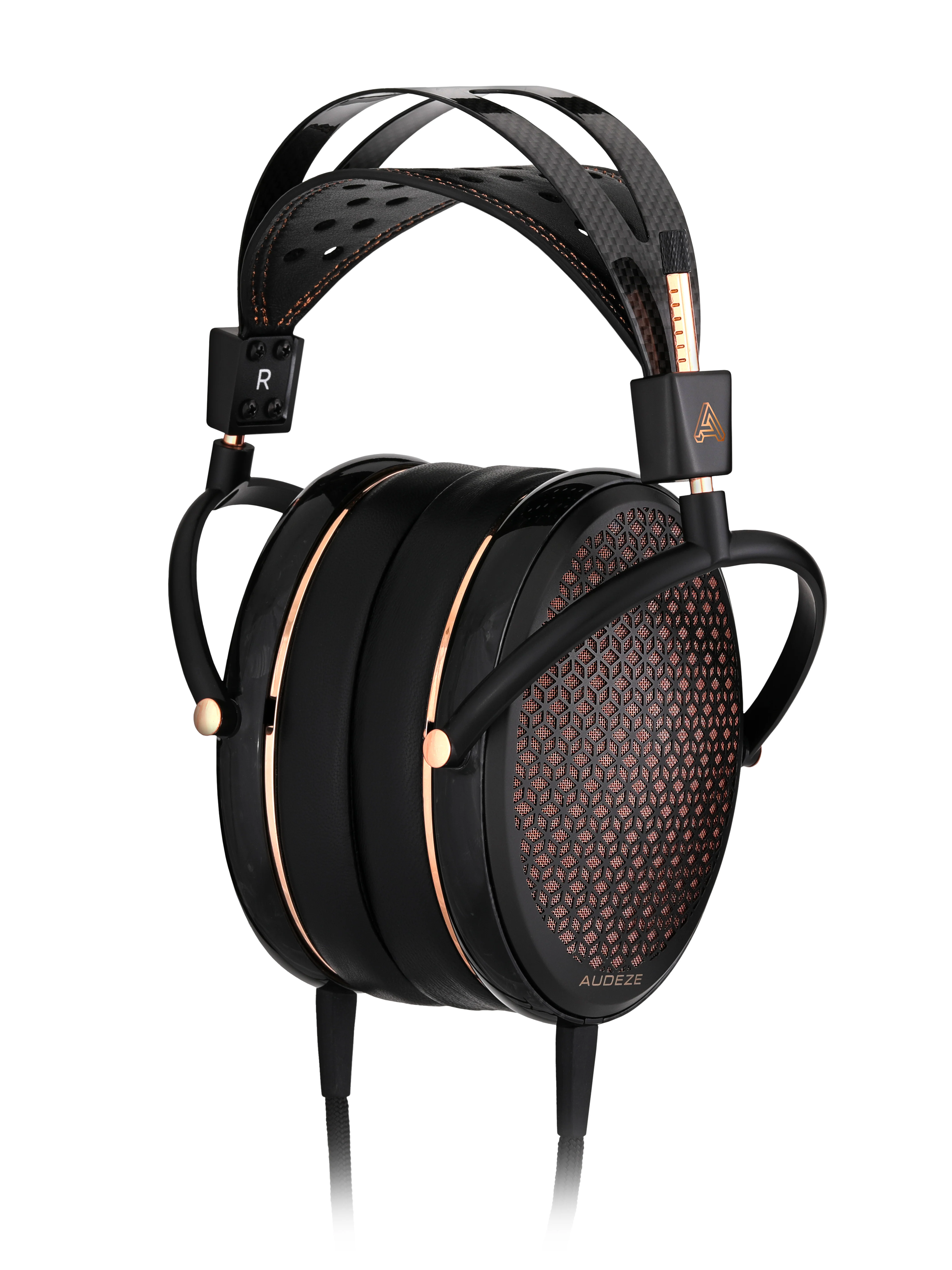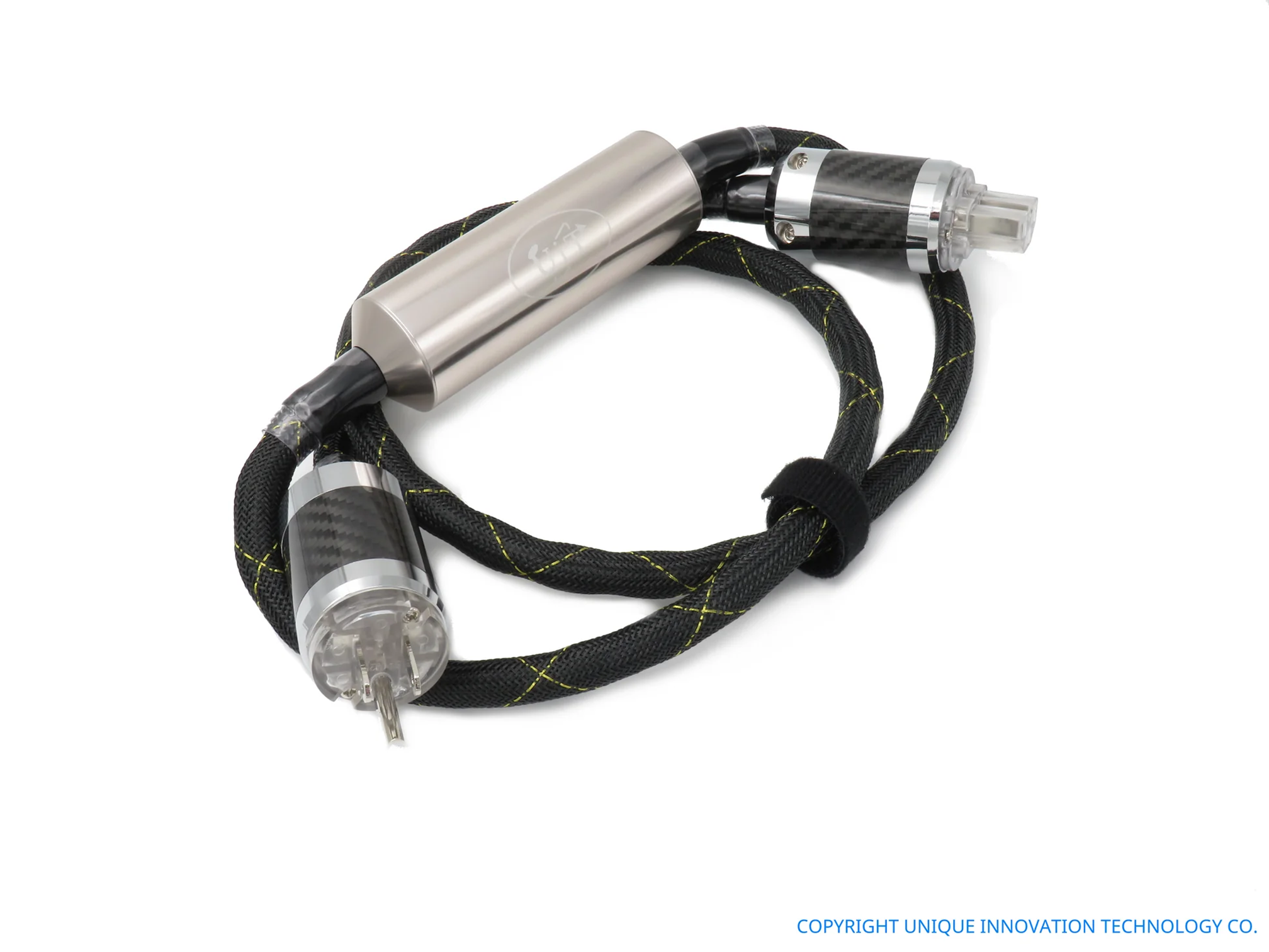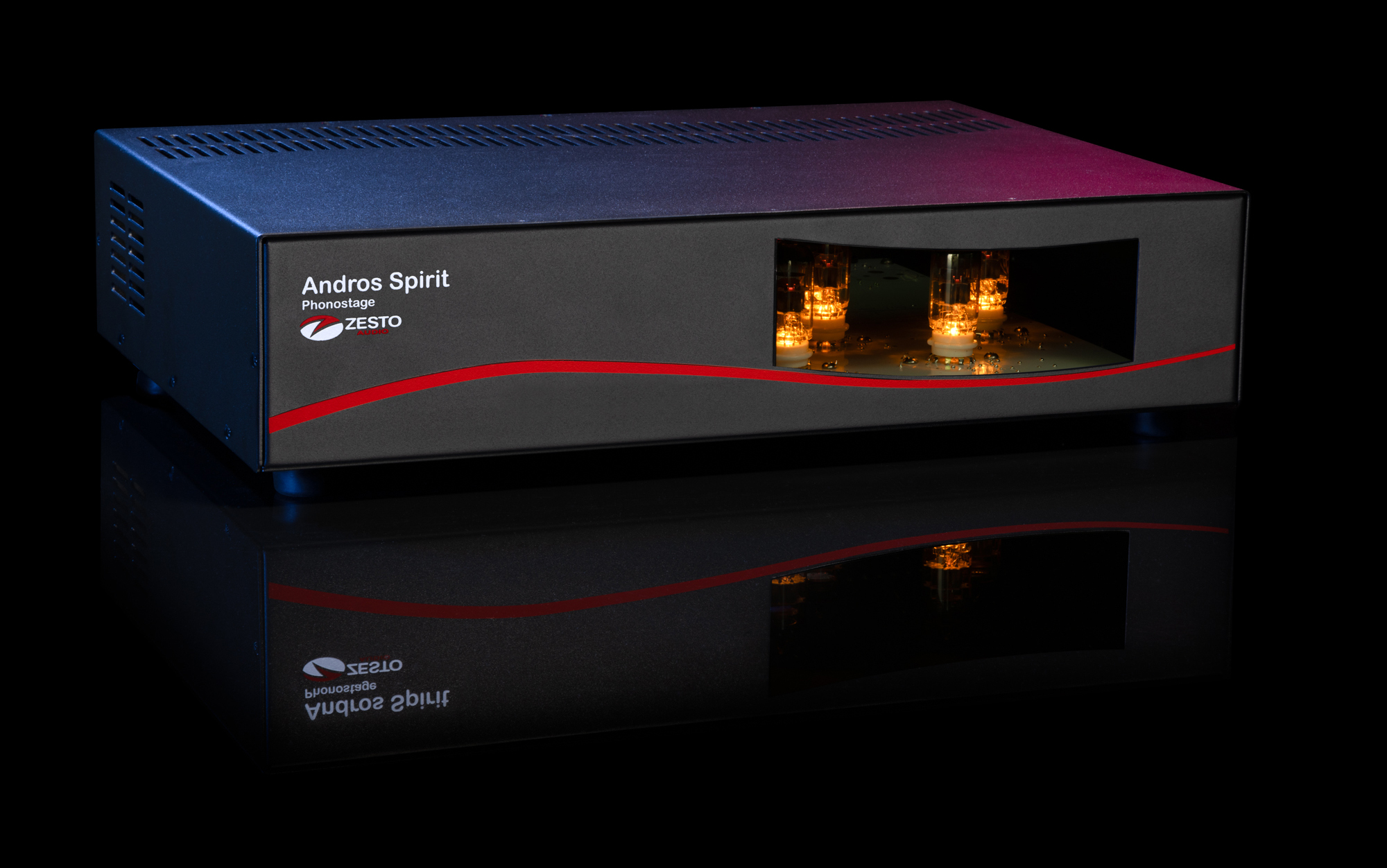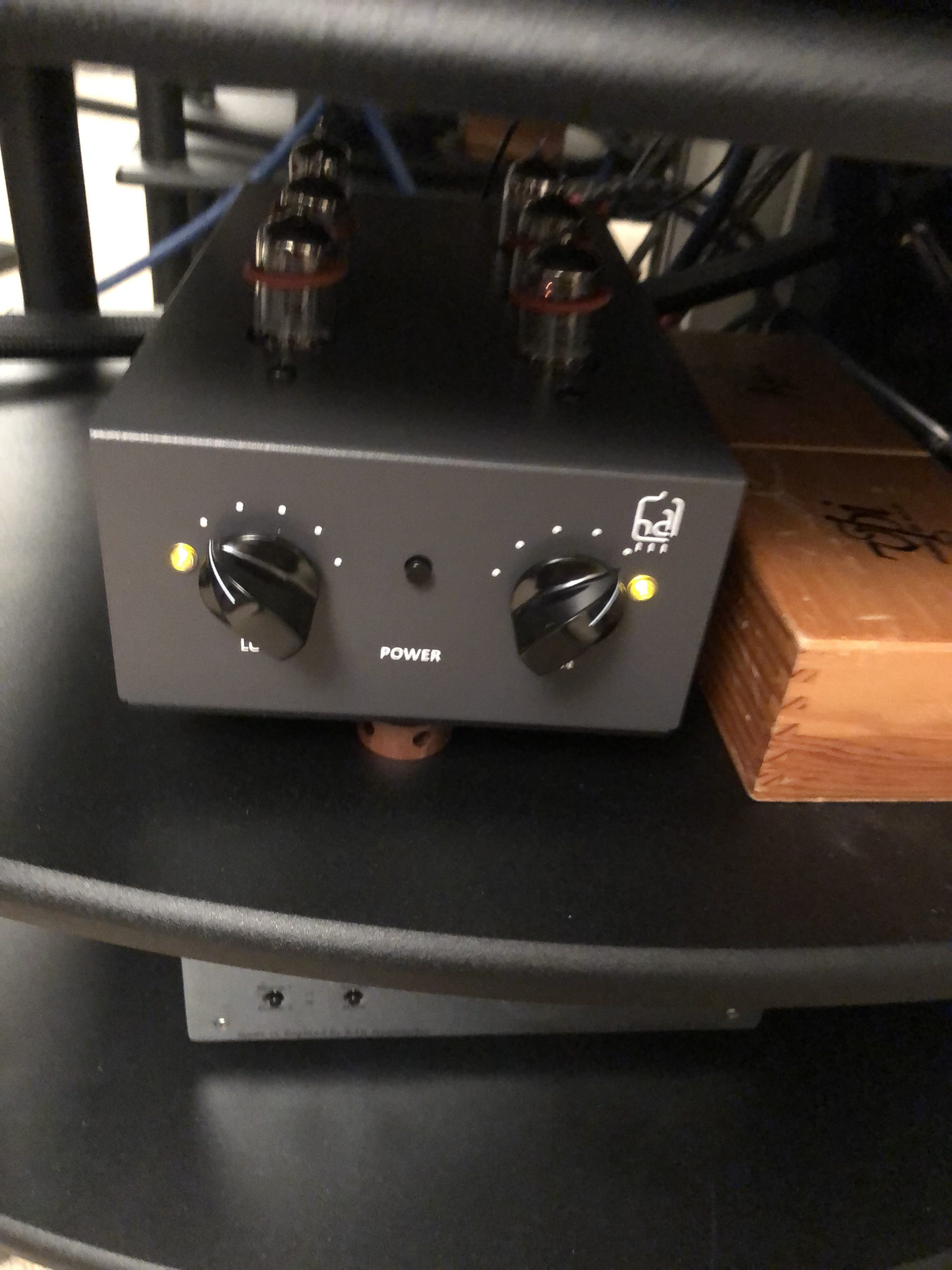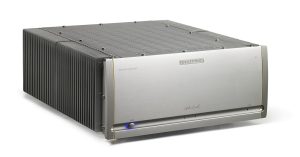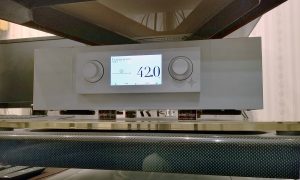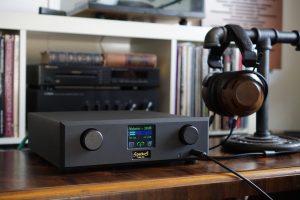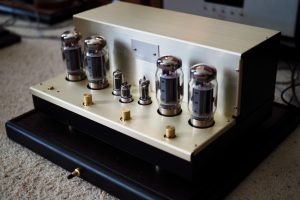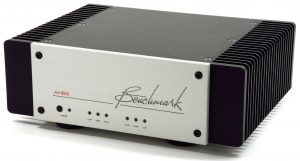A Breakthrough Amplifier Design
A pair of the Zesto Audio Eros 500 Select Monoblock Amps (image courtesy of Zesto Audio)
The more I immerse myself in this hobby since I retired from the entertainment industry in 2008, the more certain I have become that the amplifier is the most important and telling piece of equipment in your system. It was in the late 1970s that J. Gordon Holt stated in Stereophile that one should buy a very good speaker that fits your needs and then bust your budget on an excellent amplifier. I have more or less followed that advice over the last half century of reproducing music in my home. Lately, however, with the maturation of really great tube and hybrid source devices, phono preamp sources and superb LP pressings, extraordinary phono cartridges, SACDs, much improved digital streaming with high resolution, and the maturing science of neutral and high-definition interconnectivity, I have confirmed that JGH was 100% right.
The stellar new Zesto Audio Eros 500 Select Class A monoblocks, inserted in my system with no other changes upstream, revealed via my decade-old Marten Bird loudspeakers a fully transparent window to the upstream music source in my system. I have waited a long time to say this, but with the new Eros 500 amplifiers you will achieve as complete transparency to the performance as your speakers, sources, and cabling will allow. Even more amazing, this outstanding transparency comes from Zesto Audio, just a ten-year-old American company, but one that has garnered a boatload of awards for its designs. Plus, you will achieve this with the Eros amps as delivered, with no tube rolling needed.
George Counnas installing a pair of his Zesto Audio Eros 500 monoblock amplifiers
It must be difficult to build this 250-watt Class A all-tube monoblock with zero feedback push-pull ultra-linear amplifiers in normal scale, with monoblocks weighing only 79 pounds, and fitting a normal amp stand like mine. I remember my big Cary tube amps flopping off the front and back of my amp stands, and my Pass X-600 monoblocks needing three of us to place them on the stand. These $1200 amp stands are not toys, and if the amps challenge the size of your speakers, I am not interested.
Based on my extensive research, no other tube amplifier designer in the world has duplicated this Zesto Audio amplifier design, ever. No other company builds anything like this design for delivering extremely high power with only .07 THD, and doing so with total reliability and no user biasing required.
The Eros 500 monoblocks are a first, and in a class all by themselves.
How does Zesto do it? One answer is full-time Class A is the most transparent and lowest-distortion way to run tetrode tubes. The push-pull ultra-linear design uses 100% of the tube all the time. Zero feedback reduces the distortion even further (if you can build it.) The development of the KT150 vacuum tube has produced the glass with the durability and precision to be run in this manner. (You only need 6 per channel for 250-watts.) The very careful selection of huge powerful toroidal transformers adds to the equation. The elimination of all feedback lets the amplifier reach maximum bloom and output. You can choose every component by ear on a real-world reference system. Plus, the magic bullet which guarantees one will not dumb down or mellow out an amplifier to artificially sweeten digital playback, you can use a reference system based on phono almost exclusively. Consequently, I made sure I had the Zesto Audio Andros Deluxe II in my review system.
Eros 500 Select Key Features
Rear view of the Zesto Audio Eros 500 monoblock amp (image courtesy of Zesto Audio)
- A sextet of KT150 output tubes creates 250 watts of Class A musical power.
- Class A power is fast for a more lively, immediate response to your music
- The Bias Select switch is engineered with 3 perfect auto bias settings for KT88, KT120, KT150, and KT170 output tubes.
- The Bias Select switch is safe and easy to use; one can change bias "on the fly" so you can hear the differences.
- 4 Ohm and 8 Ohm taps give you options for your speaker preference. 4 Ohm may give you more bass; the 8 Ohm tap may sound more open.
- The optimized frequency response provides the best musical range to benefit the natural harmonic structure of the instruments.
- The SpeakOn cable connector provides the most reliable hookup for your subwoofer.
- Transformer balanced true differential XLR input offers noise canceling and rejection, as well as providing ground isolation from your preamp.
- Should you need to eliminate a hum? The Eros 500 has an XLR ground switch installed for your safety. This eliminates the dangerous temptation to lift the ground from the mains.
- The combo Push-Pull and Ultra Linear circuit design provide lower distortion, more power, and better performance out of your tubes.
- No Negative Feedback in the circuit design provides better dynamic range, because it doesn't compress the music.
- Non-inverting polarity retains the same phase as the input (so that your trumpets blow and don't suck).
- A large Custom Toroid power transformer provides plenty of available power.
- Toroids have lower noise because they concentrate the magnetic field and are very efficient in the 50 to 60Hz mains range.
- Choice of high-quality gold plated Single-Ended RCA or Balanced XLR connectors to suit your needs or cable preferences
- Gold pin sockets are more reliable because gold doesn't oxidize when it cycles with the heat.
- An extensive grounding scheme is designed into the power supply, wiring, and all tube circuitry.
- Elegantly designed, heavy-duty 14- & 16-gauge zinc-plated, fully grounded steel enclosure isolate external noise and vibration.
- All fuses are easily accessible.
- It's ready to enjoy, since it arrives with 50 hours of factory burn-in on all circuits and vacuum tubes.
- Each unit is hand built and "Made in the USA."
I recommend 200 hours of total run time before reference listening to give the large transformers and polypropylene capacitors a chance to break in. The supplied KT150 tubes and the 12AU7 gold pin tubes have been checked at the factory and run 50 hours before shipping. They do not have to be matched in this design. If one pops, which is unlikely, you just replace it with another tube from the same manufacturer. There is a six-month warranty on the 12AU7 tubes and a 90-day warranty on the KT150 tubes from Zesto Audio. At start-up, allow 30 minutes for the best amplifier performance. These tubes contain a lot of metal.
A Unique Tube Bias Selector Switch
Image courtesy of Zesto Audio
The Selector switch on the Eros 500 allows you to try different biases on the fly to find the exact amplifier relationship with your speakers. With the supplied KT150s, you have three bias choices.
I can only describe what I heard on my Marten Bird Speakers, which are 89dB efficient, 4 ohms, point-source design, a full-range four-driver system, all Accuton ceramic drivers with a diamond tweeter.
In the middle bias position as preferred by the designer, I heard sheer unlimited dynamic power and perfect transparency to my music source. The soundstage presentation was wall-to-wall. Depth was beyond the rear room boundaries. The image height was ceiling to floor. The soundstage was very black, with images revealed in their organic perfection, molded and rounded as in real life. My best sources were my LP playback sources including Zesto Audio and E.A.R. All three of my reference phono cartridges performed beyond my expectations and produced a sense of reality I have never heard before. My digital source, the E.A.R. tube DAC4 and Transport playing discs and Qobuz, fared well, but could not close the gap with LP.
I could tell that I needed to tweak the tubes in the DAC4 to be more pleasant and correct with the highly transparent Eros 500. My better SACDs and 24/96 and higher Qobuz offerings were excellent as a rule.
Changing the KT 150 bias setting to the higher position added a bit more volume and punch, neither needed in this application. Also, I noticed a foreshortening of the soundstage depth to a more Row C sound from a Row M sound in the middle position. After relishing the wonderful depth of the middle position, I was not interested in the close-up images of the high bias. This setting may be ideal for some moderately and very inefficient designs, and can be done for quick comparison. It only takes about 30 seconds for the change to be totally audible.
Changing the KT 150 bias setting to the lower position gave the overall performance of the amplifier a slightly lazy quality, with a warmer, less-resolved sound. My biggest beef was the vagueness of the bass range which was lacking in both slam and definition. The soundstage shrank a bit in all parameters, but imaging remained excellent. The background was less black and more of a darker gray. This was not a good match with the Marten speakers, which needed more control.
The Other Power Tubes
I did try a set of KT170 tubes and KT88 tubes. (I did not have a set of KT120 tubes available.) Both types worked fine, but never impressed me or my audiophile friends in the way they could equal the performance of the KT150 in that magical center bias position with my speakers. As a fallback tube, the KT170 sounded better overall than the KT88s in my system. Having the choices makes this Eros 500 purchase future-proof, as you never know when tube types may become scarce again. Try to buy KT170s right now.
Reference System
- Speakers: Marten Birds
- E.A.R. 912 Preamplifier, including built-in phono stages
- Zesto Audio Andros Deluxe II Phono
- E.A.R. Disc Master Magnetic Drive Turntable with two Helius tonearms
- EAT C" Turntable and arm
- Phono cartridges: London Reference MI; Grado Epoch III MM; Stein Music Aventurin V6 Mk2 MC.
- E.A.R. DAC4 Tube and DAC Transport with UITaudio USB Cable connecting the HP dedicated music computer. Sources for streaming were Qobuz and Tidal plus outboard drive for the music library.
- Cables include: UITaudio, Cardas, RSX, Jorma Design
- Restored Reference FM Tuners: Day-Sequerra, Marantz 10b, McIntosh MR80, Magnum Dynalab MD 108T
What You Will Hear with the KT150 Center Bias
I have never heard this level of transparency and neutrality coupled with the unlimited power reserve of the Eros 500. The freedom of unfettered musical realism and unlimited resources resolves even the sound of a flute with enhanced perfection. The sheer size and magnitude of the presentation eclipses any amplifier I have ever experienced—certainly any tube amp. I wish I had had this amp in my Magnepan days or my Apogee Diva days.
I could do three different reviews describing the musical characteristics of a single LP based on each of my three phono cartridges. Though that would have been possible with other designs I have auditioned, including the Bia 200 from Zesto, it would not be to the degree that the Eros 500 reveals. The spatial cues are significantly more pronounced with the Eros 500.
Kind of Blue, Miles Davis, Acoustic Sounds, 45RPM. This is the Kind of Blue for the ages. It is sheer perfection in sound and surface. I grabbed it first and it was as close to a real performance or master tape sound as one can get. With the London Reference, it had an exceptional sense of realism, though it excelled mostly in the front part of the stage. It did not resolve instruments further back in the soundstage. With the Grado, the resolution front and back improved, and spatial cues were superb. Textural cues were also exquisite. The images only came up a bit short in airiness around the instrument. With the Stein Music Aventurin, a highly modified Benz LPS MC cartridge, you could not only enjoy the weight and life of the music, but you could also envision the space around the instruments quite clearly.
The intrinsic nature of the Eros 500 seemed nowhere to be found. Even with the loudness pushed to very high levels to simulate in the room night club volume, I could not detect any colorations or strain from these magnificent amplifiers.
For jazz albums and light rock, I focused on the Aventurin cartridge in my notes.
Satchmo Plays King Oliver, Louis Armstrong, QRP Reissue, Stereodisc AFSD 5930. From the first note to the vocals, image positioning in space is without comparison. You visit the recording studio on this album and enjoy an upfront and personal New Orleans jazz homage. Maybe the best Louis Armstrong recording I own and a true reference for audiophiles. I was not aware of the sound of empty space between players void of noise and stray ambiance. Here it is and it enhances the sense of overall realism to a stunning degree. The only changes in the system are the Eros 500s.
Miles Davis, Sketches of Spain, Columbia CS 8271. This original 6 Eye recording has always been a very good pressing and very musical. It was not a great recording, as the instruments always appeared to blend together as a group and did not stand out from an imaging perspective. This time they appeared to pull apart a bit and the blacker soundstage focused their efforts. I played it for my audiophile friends who were surprised this was not some fancy reissue or special pressing.
From Impex Records, Kenny Dorham, Matador, UA Jazz, Stereo 15007. Play side two. What a treasure! Closely mic'd and a challenge for any cartridge and system, you need lots of watts to make this LP work. My reference amps made this LP sound a bit romantic. The Eros 500 made this LP do a vertical take-off. I was shocked when I played it, and it goes a long way to verifying the brilliance of the Eros 500 design as neutral and powerful.
Dream of an Opera, RhymoiMusic Co. LTD, RMP-006, 180 gram, pressed in Germany, HERE. This unusual and current LP is hard to find but really worth acquiring. It takes the themes of most of the popular and historic Chinese operas and plays them on both historic and modern instruments. It does not matter if you are Chinese or not, the music is entertaining and gorgeous. Find it. With the Eros 500 amps you are transported to a mythical world of familiar and unfamiliar instruments that blow you away. Everyone I played this LP for, made me play the entire side without interruption. This is very unusual for audiophiles. Soundstage cues are dramatically wall to wall which enhances the realism and impact.
Switching to Classical LPs
Carmina Burana, Orff, Robert Shaw, Atlanta Symphony Orchestra and Chorus, Telarc LPs, 10056-57, two LP set, distributed by audio-technica, 1981 release, Soundstream (50kHz/16-bit) digital recording. Yes, this original LP set, pressed in EU, was the Telarc digital recording LP release before the premier of the compact disc in 1983-84 when it was reissued. Except the LP set sounds superior to the CD set as the LP set was taken directly from the 50kHz master of the Soundstream recorder and not crushed down to 44.1kHz like the CD issue. The Soundstream digital tape was a full 16-bit recording, which is apparent here in the LPs. You can find these LPs in used record bins and they are worth the search.
With the Grado Epoch III, you will enjoy the full majesty of this recording with a width and breadth seldom heard short of master tapes. The Eros 500 makes the swagger of this presentation led by the great Robert Shaw come to life in your listening room like never before. I was impressed by the beauty and sweetness of the soprano vocal sound attributed directly to Shaw, who selected the vocal performers personally. I heard a reality and wholeness from this moving magnet cartridge running directly into my E.A.R. 912 professional preamp, including the phono stage, that moved me personally, having lived in Atlanta for many years.
Mercury Living Presence, SR90012, Saint-Saens Symphony No. 3, Paul Paray, Detroit Symphony Orchestra. This Mercury sponsored reissue directly from the master tapes is the best reissue so far, and truly rocks the house! The organ is rich, layered, and uber-detailed, and goes down to at least 30Hz with slam. Played with the London Reference which tracks it well (a real miracle), the Eros 500s pour in the watts with elegant clean power. Using the Cardas Clear Beyond special order phono cables, the spatial elegance that eluded other recordings come to light. I wonder if the slightly hollow sound of this recording, now almost missing with this reissue, was a problem with the original pressing. This LP sounds like it was recorded in a legitimate concert hall with lively acoustics. Nevertheless, wow, is it a thing of beauty and stunning with the Eros 500s! These amazing amplifiers turn this LP into an event.
Beethoven, Symphony Number 7, Antal Dorati conducts London Symphony Orchestra, Mercury Stereo SR 90523. Another of my favorites recorded in England by the Mercury team, this Mercury reissue is a wonderful recording often overlooked by classical buffs. With gorgeous string sound coming from the Grado Epoch III, the sweeping continuousness of the orchestra is so thrilling and beautiful. The richness of the concert hall comes vividly through, and the sense of space is oh so beautiful. The Eros 500s just seem to get out of the way and let the music flow.
Summary
Image courtesy of Zesto Audio
The Zesto Audio Eros 500 Select Class A monoblocks are a totally unique offering in today's high-end marketplace. Their topology in my estimation is a design that has never been done successfully before now. ARC has always stayed away from class A designs, and never hesitated to add negative feedback. Jadis uses Class A, but runs the tubes in triode yielding only half the power. The Eros 500 monoblocks are unique and new, and I have not even mentioned the Selector that allows the user to dial in four current tube types making the Eros future-proof.
The Eros 500s are the most neutral, realistic, and natural-sounding amplifiers that have graced my home in this century. They get out of the way of the musical flow and just exists. With 250-watts of Class A power at the ready, they sound like 500-watt amps. Weighing in at just 79 pounds each, they will not take over your studio space or heat up the house. The lights dimmed just a bit with turn-on but then ran perfectly on a 15-amp circuit. Over the entire review period, they performed exquisitely without quibbles. The fit and finish of these amplifiers are exceptional and the design elements all contribute to user satisfaction. They only left off the fancy lights and colorful meters, which I guarantee you are not free.
I am at a loss for words to describe my excitement listening to the groundbreaking Eros 500 monoblocks. I was expecting excellence, but not ball-busting greatness. Plus, from all the worldwide tube manufacturers of note and history, it is Zesto Audio in Southern California that creates these masterpieces.
Congratulations to George Counnas and Zesto Audio for bringing to us, the audiophiles of the world, the best tube amplifier (and maybe any amplifier) ever. You must hear the Zesto Audio Eros 500 Select Class A monoblocks if you are even contemplating cost-is-no-object or high-end high-powered amplifiers for your system. These are the best amplifiers yet devised, in my humble opinion.
Zesto Audio Eros 500 Select Class A monoblocks
Retail: $35,000
Zesto Audio
3138 Calle Estepa
Thousand Oaks, CA 91360
Engineering, George Counnas
805.807.1840
Sales and Marketing, Carolyn Counnas
805.807.1841
All photographs by Bob Levi, with image processing by David W. Robinson, unless otherwise noted.




